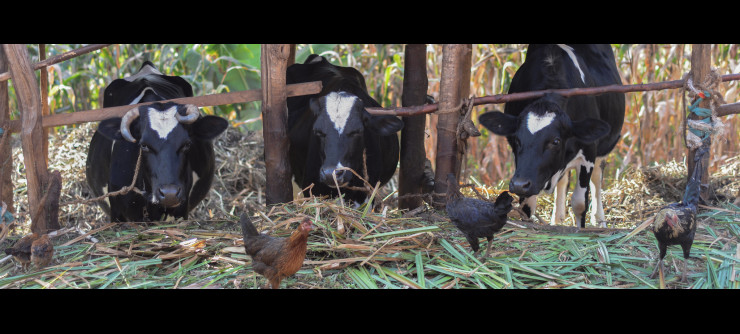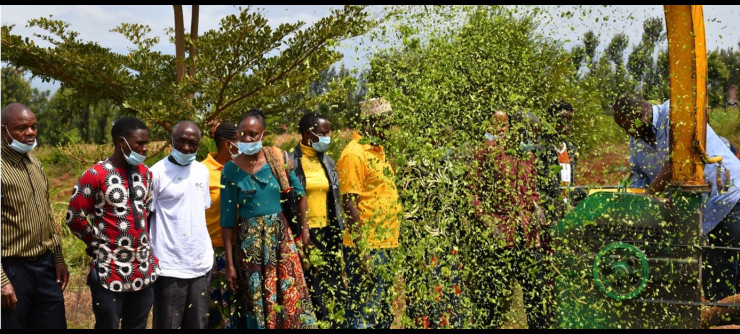The Livestock Feeds & Forages flagship aims to increase livestock nutrition by identifying, testing and delivering superior feed and forage strategies and options.
Often the most expensive input and key limited factor in livestock production is feed. When feed and forage research is integrated into improved animal health and genetics, significant enhancements in livestock production can be made, at times by up to 240%.
In mixed crop–livestock systems, which have the potential to intensify, the most important contributors to feed resources are forages, crop residues and rangelands. In pastoral and agropastoral systems, rangeland grazing is often the only source of feed.
Improved feed and forage options (including processing and commercialization), better management of rangelands, and increased cut-and-carry and pasture resources, together with improved feed utilization of crop residues and other agricultural by-products, all have considerable underexploited potential to improve animal productivity, while also contributing to the resilience of agro-ecosystems and environmental sustainability.
Developing and testing better and increased feed-based solutions
This flagship provides feed-based solutions that respond to challenges in the rapid growth trajectory to increase the quantity and quality of feed biomass, to smooth seasonal variability without over-taxing the natural resource base and harness positive environmental effects, such as contributions to biodiversity, soil fertility and carbon sequestration.
The flagship is developing, testing and delivering superior feed and forage strategies in order to increase livestock productivity among livestock producers and keepers, both in fragile and rapid inclusive growth systems. In fragile growth systems, focus is on identifying opportunities to improve livelihoods through ‘smoothing productivity’, so that producers can maintain regular supplies to markets and are less susceptible to seasonal variations. In rapid inclusive growth systems, opportunities centre on reducing the variability of feed supply across seasons and years, in order to achieve better and more stable animal production, enhance household consumption of animal-source food, and build household and community resilience.
Three consortia are inherent in the flagship: the Cactus consortia, developing and scaling specific feed options for rangelands; the full purpose crop consortia, linking food and feed and production; and the Biological Nitrification Inhibition consortia, working on technical crop and forage solutions to mitigate greenhouse gas emissions, linking with the Livestock and Environment flagship. A strong emphasis is given to further improve the discovery-to-impact pathway through integrating knowledge tools for diagnosis and targeting and developing scaling strategies for feed and forages technologies, linking with the Livestock Livelihoods & Agri-Food Systems flagship.
The flagship:
- Aims to close yield gaps through improved feeding that increases livestock productivity, providing enhanced opportunities for smallholder livestock keepers and producers to meet increased demand for livestock products.
- Builds on CGIAR comparative advantages, including a long tradition of research on feeds and forages and the unique genetic resources held in CGIAR genebanks.
- Exploits new scientific opportunities to produce more and better quality feeds and forages.
- Delivers content-specific feeding strategies that increase overall feed supply and livestock productivity in intensifying systems and provides more reliable feed supply in vulnerable systems.
- Identifies and addresses specific strategies to enhance equity and improve participation of women and young people in the livestock sector.
The flagship builds on research carried out over several decades, by ILRI (and ILCA), ICARDA, CIAT, ICRISAT and latterly by the Livestock and Fish CRP. Much has involved national research and extension services, as well as farmers and the private sector, in the development and testing of innovations.



